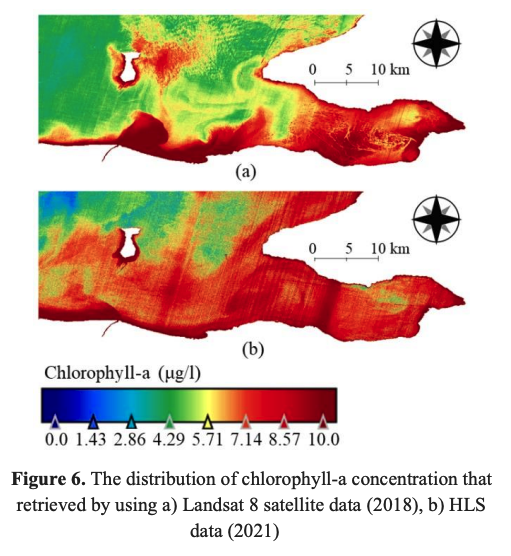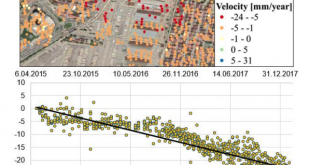ISPRS Congress, The International Archives of the Photogrammetry, Remote Sensing and Spatial Information Sciences, Volume XLIII-B3-2021 DOI: 10.5194/isprs-archives-XLIII-B3-2021-515-2021
Monitoring chlorophyll-a and sea surface temperature with satellite data derived from multiple sensors
A. Tuzcu Kokal and N. Musaoğlu
Abstract: Water is an essential natural source for human being and environment. To conserve water sources, monitoring them by using remote sensing data and technologies is an efficient way. In this study, water quality of the Sea of Marmara (Turkey), which has lots of currents, was examined. The main aim of the study was developing a common model to monitor chlorophyll-a concentration in time by using satellite data. After, the coefficients of the OC2 (ocean chlorophyll 2) model were detected by curve fitting, it was applied to Landsat images. The bias and RMSE (Root Mean Square Error) were found as 0.73 µg/l and 5.80 µg/l, respectively. The high RMSE was stemmed from dynamic structure of the sea. Thus, the temporal resolution has a profound impact on the accuracy of estimations. The developed model was applied to the HLS (Harmonized Landsat Sentinel-2) data, which has high temporal resolution. The results of the HLS and Landsat images were compared, and HLS is found as proper to monitor the water quality. The combined data (SST (Sea Surface Temperature) daily data from 1981 to present derived from satellite observations Level-4 product) was used for the secondary aim of the study which was monitoring SST. The bias and RMSE of the data, which was acquired on 19.07.2017, were found as 0.33 °C and 1.12 °C, respectively. The bias and RMSE of the data, which was acquired on 18.07.2018, were found as −0.02 °C and 1.03 °C, respectively. The combined data is found appropriate to monitor the SST.

Available Online: https://www.int-arch-photogramm-remote-sens-spatial-inf-sci.net/XLIII-B3-2021/515/2021/
 CSCRS İTÜ – Center for Satellite Communications and Remote Sensing
CSCRS İTÜ – Center for Satellite Communications and Remote Sensing 